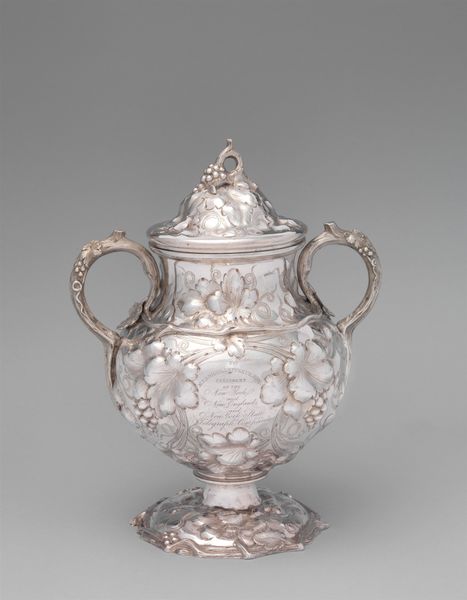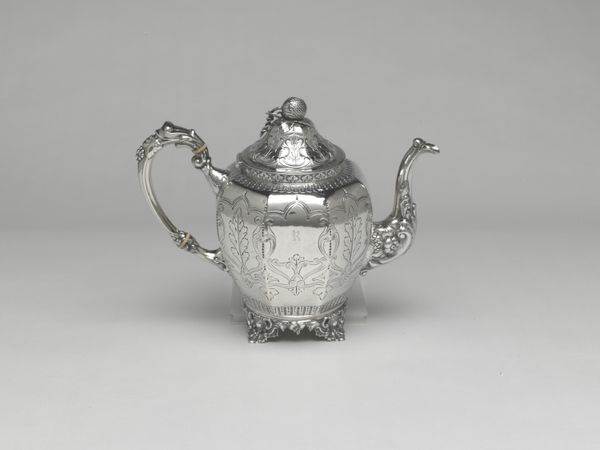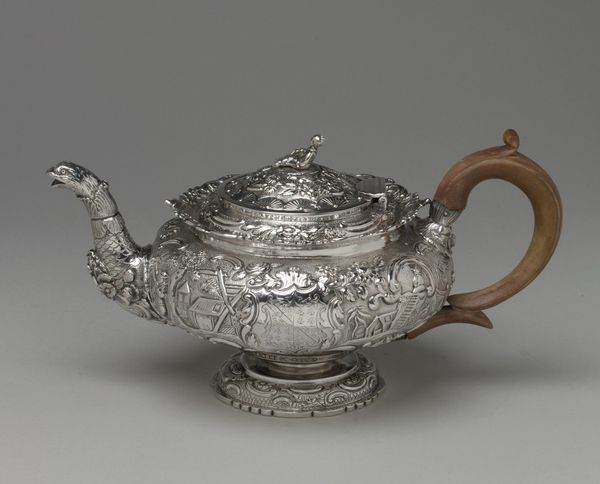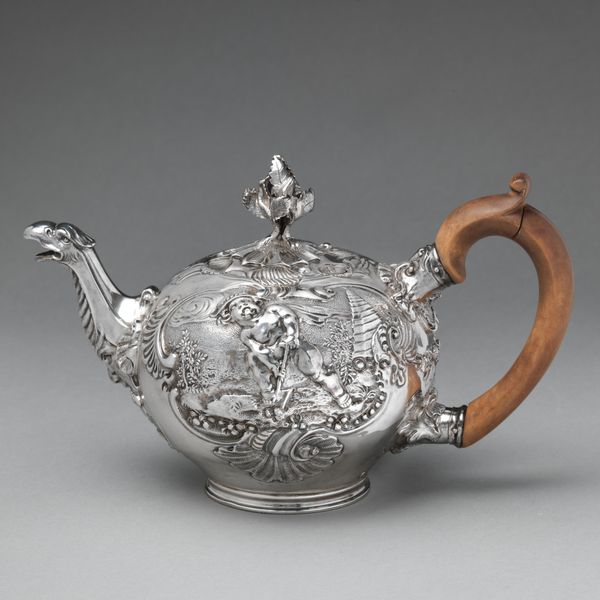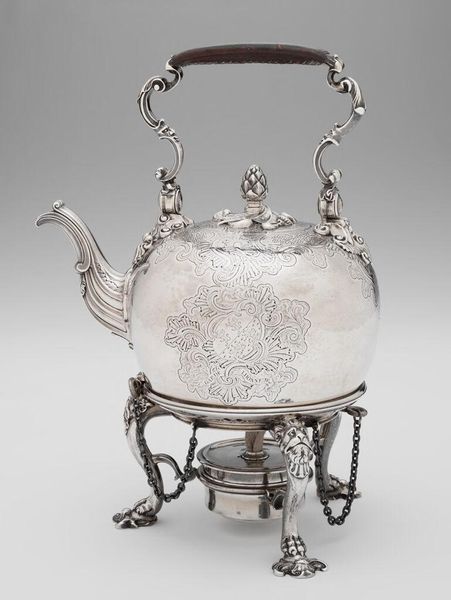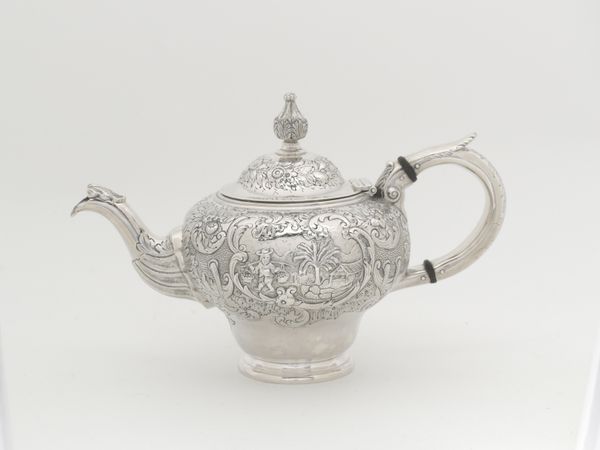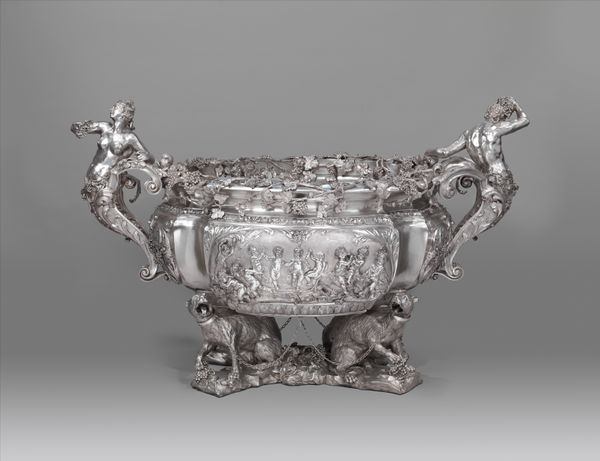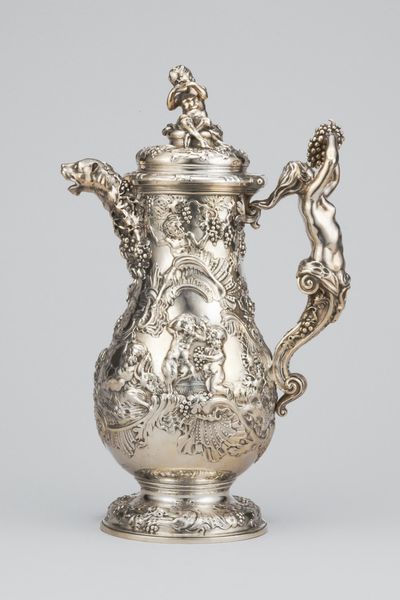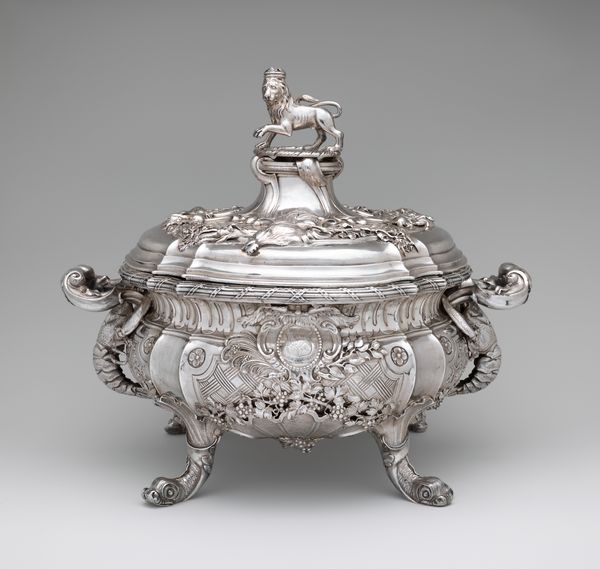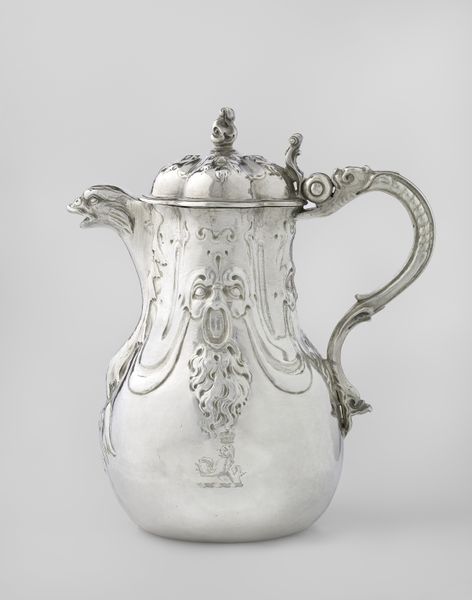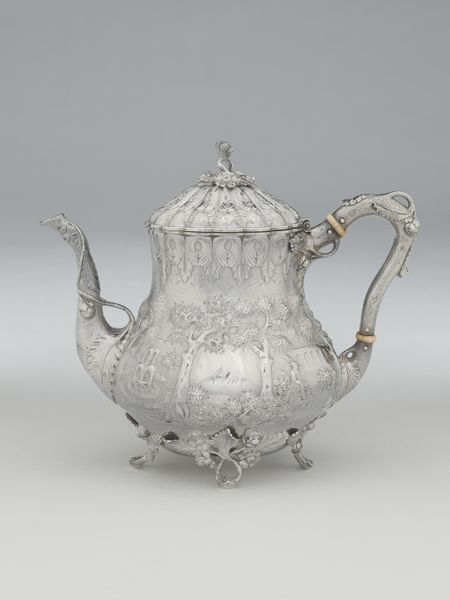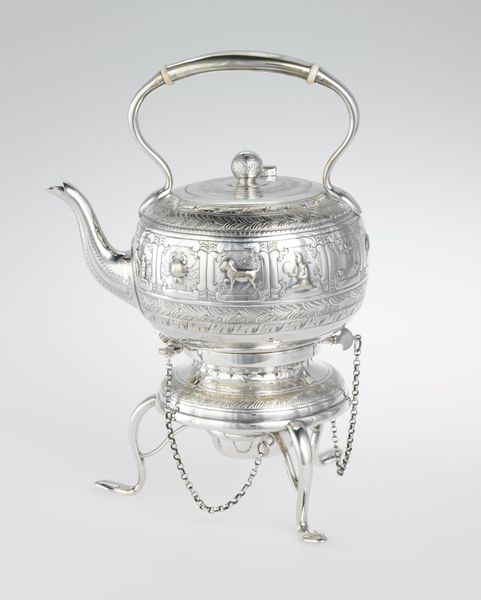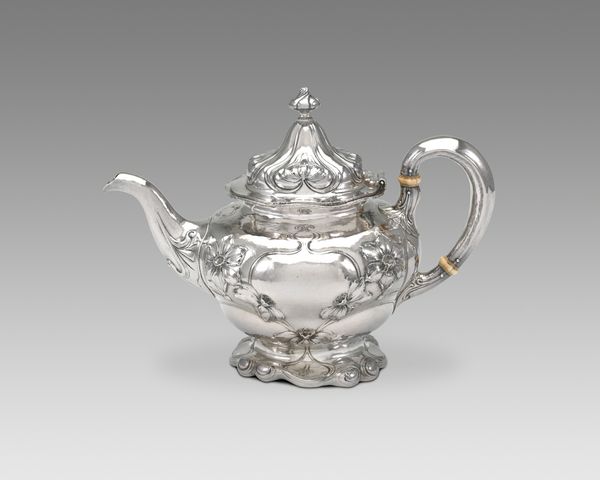
silver, metal, sculpture
#
silver
#
baroque
#
metal
#
sculpture
#
decorative-art
Dimensions: Overall (confirmed): 14 3/4 x 10 x 7 3/4 in., 93 oz. 5 dwt. (37.5 x 25.4 x 19.7 cm, 2.9kg)
Copyright: Public Domain
Curator: Welcome. Before us stands an exquisite silver teakettle and spirit lamp with stand, crafted by Paul de Lamerie between 1744 and 1745. Editor: My first thought? Over the top! It's incredibly ornate, with details fighting for attention. But the material, the sheer volume of silver...it hints at something more. Curator: Absolutely. This isn’t just a teakettle; it's a statement piece, reflecting the societal embrace of luxury goods during the 18th century. Silver, of course, signified wealth and status, something Lamerie excelled at conveying to his elite clientele. Editor: Exactly. Think of the silversmith’s workshop – the labour! Hammering, chasing, engraving...the transformation of raw silver into this Baroque extravagance demanded skill and, of course, exploited labour. The artistry on display is undeniable, but the social costs... Curator: Indeed, it reflects a complex interplay of artistic innovation and economic reality. The spirit lamp stand, allowing the water to be kept constantly hot, reveals the growing sophistication of tea consumption in aristocratic circles, and highlights global trade networks required to deliver such imported commodities to London society. Editor: And consider the symbolism woven into the design. The repoussé work—floral motifs, perhaps references to faraway lands—turns the tea ritual into theatre. This is about far more than just drinking tea; it's a display of global reach and economic power. Curator: And don’t forget Lamerie's reputation! He was the son of French Huguenots, establishing himself among London's most sought-after silversmiths by catering to evolving aristocratic taste. This teakettle encapsulates that appeal. Editor: For me, this object really embodies a pivotal point. The intense material presence and artistry combined with implications of colonial economies are not to be dismissed. It speaks volumes, not just about wealth and refinement but about production and consumption. Curator: A truly magnificent piece. By looking closely we reveal a picture of ambition, artistry, and a fascinating glimpse into the dynamics of 18th-century London society. Editor: An important reflection for our present-day considerations on materiality, legacy and consumption.
Comments
No comments
Be the first to comment and join the conversation on the ultimate creative platform.

